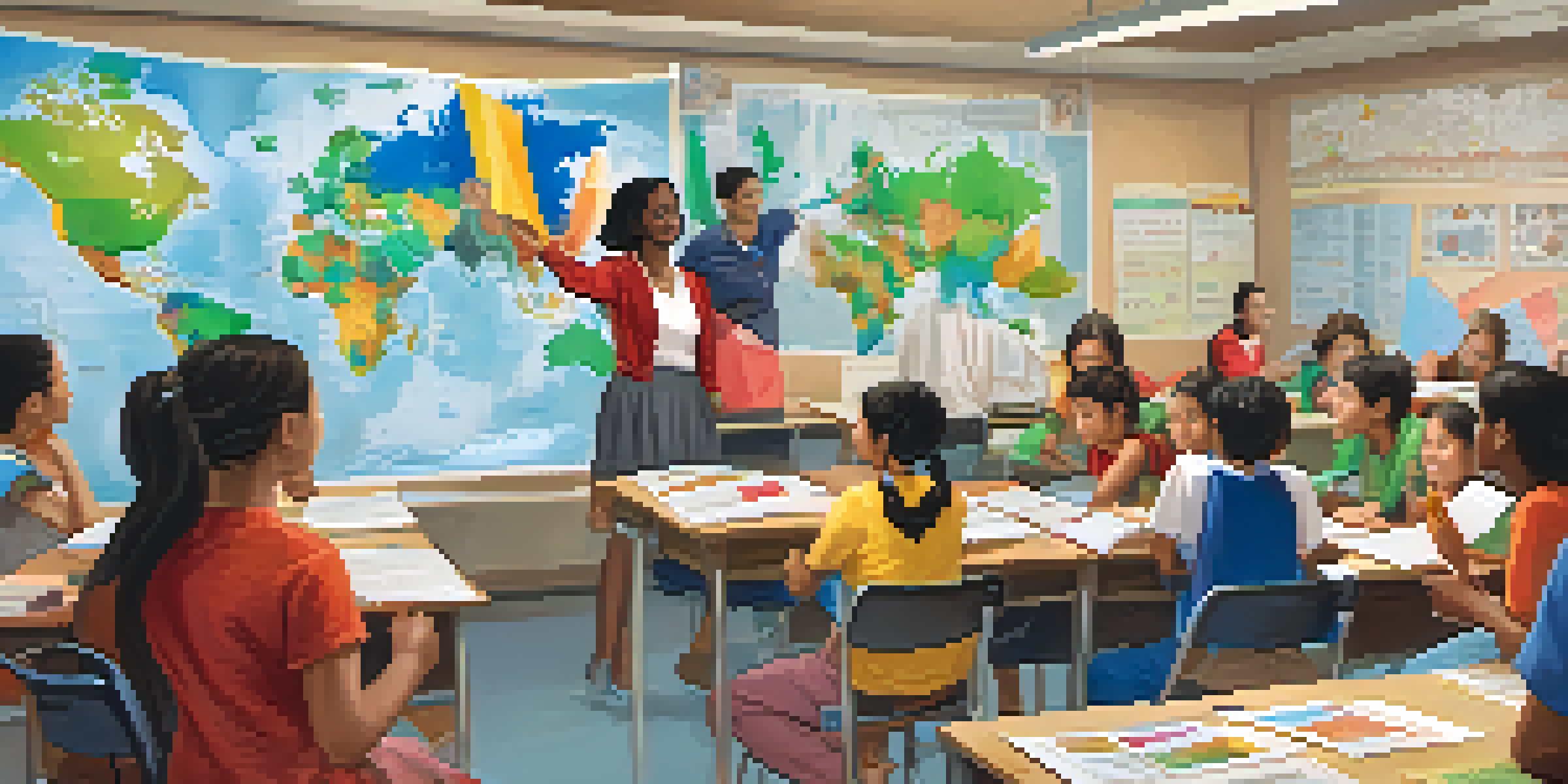The Role of Language in Cultural Exchange Programs

Understanding Cultural Exchange Programs and Their Purpose
Cultural exchange programs are designed to promote mutual understanding between different cultures. They involve individuals traveling to foreign countries to experience new customs, traditions, and languages. The core aim is to build bridges between communities, enhancing global awareness and appreciation.
Language is the road map of a culture. It tells you where its people come from and where they are going.
These programs often bring together students, professionals, and families, allowing them to share their unique perspectives. Through immersion in a different culture, participants gain insights that textbooks alone cannot provide. It’s a living, breathing experience that enriches both sides.
Ultimately, cultural exchange programs help foster a sense of global citizenship, where participants return home with new skills and broader viewpoints. They become ambassadors of their culture, sharing their experiences and knowledge with others, thus perpetuating the cycle of understanding.
The Importance of Language in Cultural Exchange
Language acts as the primary medium through which cultural exchanges occur. It is not just a means of communication but a vessel carrying the nuances of culture, tradition, and identity. Understanding a language allows participants to engage more deeply with local customs and practices.

For example, when someone learns to speak Spanish while participating in a program in Spain, they can better appreciate the subtleties of local humor and social norms. This deeper understanding helps break down barriers and fosters stronger connections among participants.
Cultural Exchange Fosters Understanding
Cultural exchange programs promote mutual understanding by allowing participants to experience new customs and perspectives.
Moreover, language enables the sharing of stories and experiences that reflect cultural values. These exchanges can lead to profound personal growth and a greater appreciation for diversity, making language an essential tool in cultural exchange.
Overcoming Language Barriers in Exchanges
Language barriers can often pose significant challenges in cultural exchange programs. Miscommunication can lead to misunderstandings, causing frustration and limiting the depth of interactions. However, these barriers can also serve as opportunities for growth.
The limits of my language means the limits of my world.
Participants often find creative ways to communicate, whether through gestures, visuals, or basic phrases. This resourcefulness fosters camaraderie and encourages collaboration, as individuals work together to bridge the gap. It’s a process that can enhance teamwork and make the experience even more memorable.
Incorporating language learning into the program can help participants feel more comfortable. Classes, conversation partners, or even informal practice sessions can empower individuals to express themselves and engage more fully with their host culture.
The Role of Language Teachers in Cultural Exchanges
Language teachers play a crucial role in the success of cultural exchange programs. They not only impart language skills but also provide context and cultural insights that enhance the learning experience. Their guidance helps participants navigate the complexities of communication in a new environment.
In many cases, teachers facilitate interactions between participants and local communities. They introduce students to cultural practices and help interpret social cues that might otherwise go unnoticed. This mentorship is invaluable in making the exchange more rewarding.
Language Bridges Cultural Gaps
Language serves as a crucial tool in cultural exchanges, enabling deeper connections and authentic interactions.
Moreover, language teachers often serve as cultural ambassadors themselves, sharing their own experiences and stories. This mutual sharing enriches the program, creating a more vibrant and immersive experience for everyone involved.
Cultural Nuances Reflected in Language
Every language carries unique cultural nuances that reflect the values and beliefs of its speakers. For instance, the use of formal versus informal speech in many languages indicates the level of respect and familiarity. Understanding these subtleties enhances communication and fosters respect.
When participants learn these nuances, they can engage more authentically with locals. This understanding goes beyond mere words; it taps into the essence of cultural identity. For example, knowing when to use polite forms of address can make a significant difference in how one is perceived.
Thus, language learning in cultural exchange programs is not just about vocabulary and grammar; it’s about understanding the heart of a culture. This deeper knowledge cultivates respect and appreciation, essential elements in any cultural exchange.
The Impact of Language on Building Relationships
Language is a powerful tool for building relationships in cultural exchange programs. When individuals take the time to learn and use each other's languages, it demonstrates respect and openness. This effort can significantly enhance interpersonal connections and foster a sense of belonging.
For instance, a simple greeting in the local language can open doors to deeper conversations and friendships. Participants often find that locals appreciate even basic attempts to communicate, which can break down initial barriers and lead to more meaningful interactions.
Technology Transforms Language Learning
Advancements in technology are enhancing cultural exchange programs by facilitating language learning and virtual connections.
As relationships develop, participants often share personal stories and experiences, enriching their understanding of each other's cultures. This sharing not only strengthens bonds but also promotes empathy and global awareness, which are vital in today’s interconnected world.
The Future of Language in Cultural Exchange Programs
As globalization continues to shape our world, the role of language in cultural exchange programs is more important than ever. With advancements in technology, new platforms and resources are emerging to facilitate language learning and cross-cultural interactions. These innovations can enhance the overall experience for participants.
Virtual exchange programs, for instance, allow individuals to connect with peers from different countries without the need for travel. This opens up opportunities for dialogue and collaboration across borders, making cultural exchange more accessible. Language remains a vital component in these virtual interactions.

Looking ahead, integrating technology with traditional language learning methods can create a richer, more immersive experience. By embracing these changes, cultural exchange programs can continue to foster understanding and connections among diverse communities for generations to come.